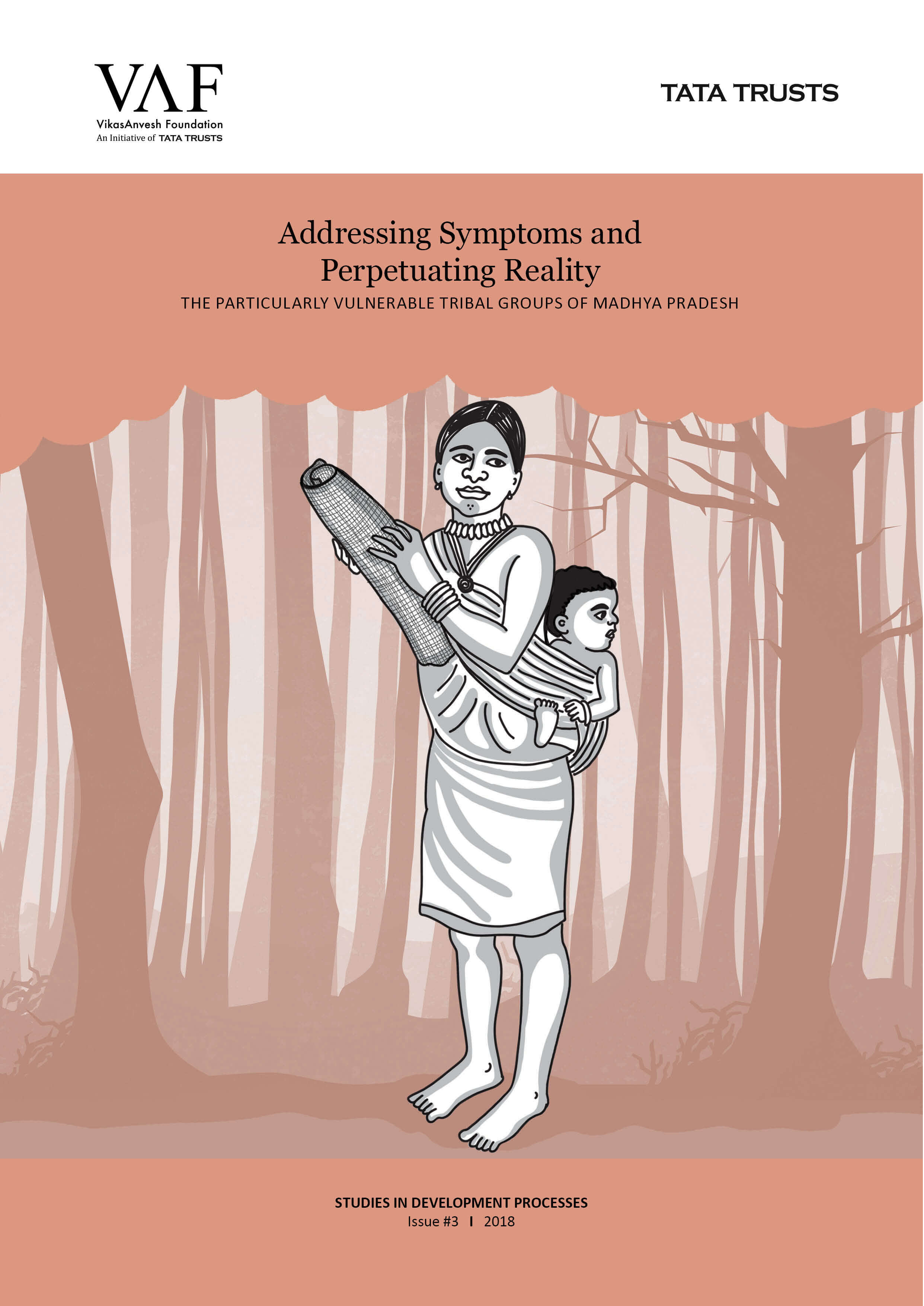Studies in Development Processes Issue#3
Authors : Sanjiv Phansalkar, Manu Sinha, Nachiket Sule, Neha Gupta, Pragya Bajpai, Soumik Banerji, And Soumi Kundu
Remoteness and Forest dwelling, pre-agricultural livelihoods; subsistence economy and a stagnant if not falling population were the four parameters used by the National Advisory Committee (NAC) to classify specific ethnic groups into a category named “Particularly Vulnerable Tribal Groups”(PVTG). Of the about 28-29 lakh persons of the 75 PVTG; 5.5 lakh persons of 3 PVTG live in MP. Following their recommendation of the NAC, the Government of India devised conservation cum development (CCD) plans as an instrument to support efforts to positively transform their living conditions while enabling them to preserve their cultural integrity. The people of the PVTG live in remote locations. In MP they are scattered over a wide area, live surrounded by dominant communities and tend to be swamped in that environment. In that respect, their case is not unlike other disenfranchised groups such as nomadic tribes or persons with disability in whose cases too small numbers combine with geographic scatter. Lacking physical and social access to development administration; suffering from poor navigation and political skills, they are unable to counter the strong influence of the dominant communities on the process of development. The State machinery for implementation of the CCD is thinly manned and has a limited facility for reaching out to the people of the PVTG. Outcomes of the efforts for their well being including the outcomes of the CCD have not been remarkable regarding the noticeable improvement of the critical development parameters about the people of the PVTG. They suffer endemic vulnerabilities in their livelihoods, regarding their food security and their transactions with the dominant communities.
Underdevelopment of the PVTG is a resultant of the social process of domination and differential power to influence outcomes of administrative action of the State. It is suggested that future approach to promoting the wellbeing of the PVTG should ride on a technology-enabled platform. Funds allotted under CCD should be treated as additional to normal State schemes. Use of these funds for the creation of infrastructure should be strongly discouraged. Information on each PVTG household should be gathered on a digital platform. This information should be used to target, implement and monitor development interventions of the nature of direct individual benefit. Implementation machinery at the cutting edge level needs to be suitably augmented with technology savvy staff charged with the responsibility of ensuring development outcomes.

